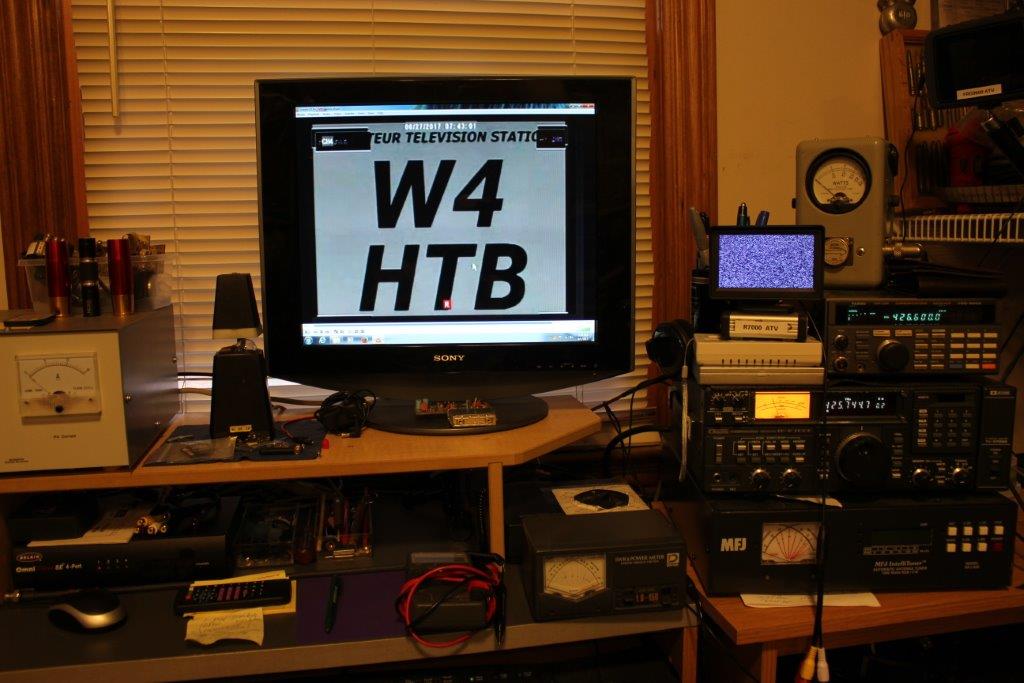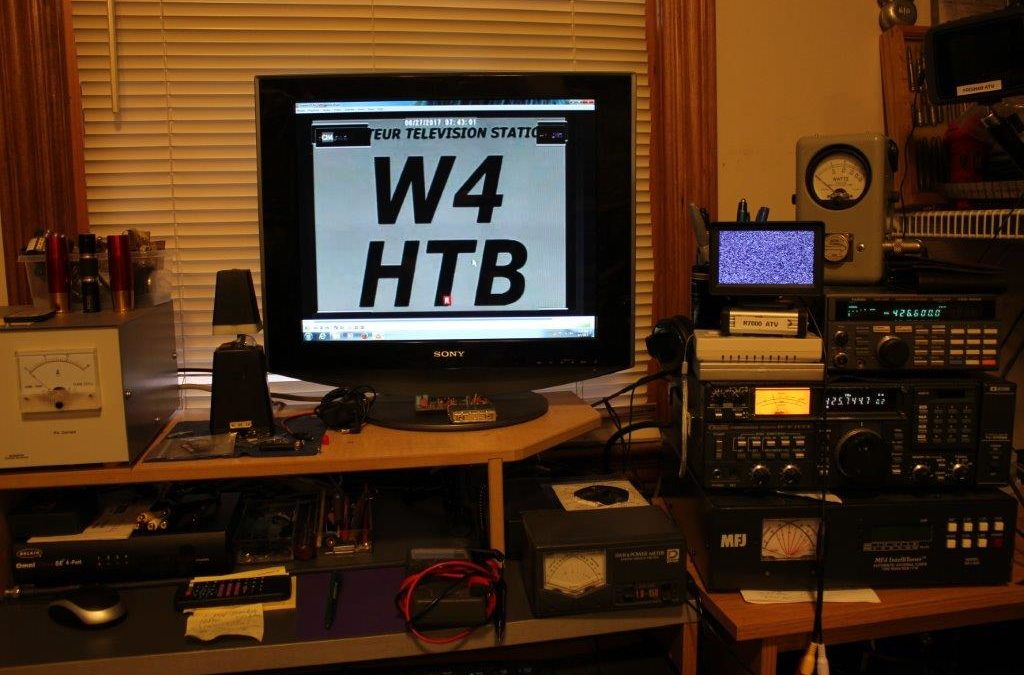DARA ATV FAQ’s
How can you get involved in ATV in the greater Dayton region? —
If you have HF capabilities, a regional ATV HF NET on 3.930 MHz meets for ATV DX coordination purposes daily. The HF ATV net starts daily around approximately 0730 a.m. Dayton Local time on 3.930 MHz LSB. The net start time has to be somewhat flexible as the ATV group waits for another scheduled net to clear the frequency. On weekdays, you can expect to hear stations in Ohio, Kentucky, Michigan and Indiana on this HF ATV net coordination frequency. On weekends, there will normally be check-ins from the local Dayton area. Anyone is welcome to check in the net. You can actually see streaming activities that allow ATV’ers to see their own A5 or D2 signals on WB8LGA’s webpage through a linked BATC streaming window during this HF net. The streaming link can be found at http://wb8lga.tv/BATC_Streams_Framed_WB8LGA.html If you live in the greater Dayton area, feel free to check in on the net and if you are interested in getting involved in ATV, contact DARA club members AH2AR or W8GUC and they will be happy to assist you in helping you to get started in ATV. — The ATCO group (Amateur Television of Columbus) has a Tuesday night net (8:00 p.m. local Dayton time) that welcomes check-ins on 147.480 MHz simplex and also streams the net activity on this web page http://www.batc.tv/multi_screen.php?ch=5 Check the box WA8RMC and then click the “Watch button” at the bottom of the page. The streaming session allows you to check in via text messaging and you can also watch ATV video check-ins via the streaming window found at this URL.
Can you expect to see and/or work ATV DX on the ATV Repeater Link?
When there are enhancements due to tropospheric ducting, the answer is yes! There are times throughout the year where distances up to 230 miles between the repeater site and the DX station has occurred. Here is a recent photo of W4HTB in Bowling Green Kentucky being received and re-transmitted by the W8BI ATV repeater:

W4HTB Station
What can I expect when there are no UHF band enhancements?
Depending upon your antenna configuration (usually a single 70cm yagi) and operating power, (usually 40 watts average power on A5), paths to the repeater are possible at 20-40 miles. Keep in mind that the longer distances will require an optimized antenna height and an amplifier since commercially manufactured A5 transmitters usually only provide about 8 watts average RF power and as with any UHF installation, higher antennas will help provide better line of sight.
Why is Digital Video Broadcast-Terrestrial (DVB-T) being used as the Digital ATV standard on the W8BI ATV repeater?
Although DVB-T is not used commercially in the United States, this standard has been adopted by ATVers in the United States primarily because inexpensive commercial gear has been readily available for amateur use. Also, the commercial transmitters’ bandwidth can be set to transmit and receive 2 Mhz bandwidth QPSK signals and this has allowed for more efficient spectrum use along with increased realized gain performance when compared to a 6 MHz-wide digital ATV signal. Lastly, the 2 Mhz QPSK DVB-T parameters have been adopted as the configuration for simplex use by Ohio/Kentucky regional hams for DX contact attempts, and it stands to reason to keep the W8BI ATV repeater with this same DVB-T configuration.
What makes general ATV activities or activities on the ATV repeater any better than streaming video or Skype?
In a practical sense, the W8BI repeater has been serving as a “DX-Window” and distant stations have been using the repeater as an indicator of 70cm ATV band openings. The ATV repeater also provides a means to experiment with 23cm and 70cm ATV signals, since the crossband function of the repeater allows the experimenter to monitor his/her own video signal during antenna, transmitter and amplifier experimentation. Because this mode is not as “Plug-and-Play” as some other modes of amateur radio, experimentation becomes a key in setting up an effective ATV station.
Aside from the ATV repeater activity, I have heard that regional ATVers are using the streaming site “BATC” during their daily regional HF ATV nets on 3.930 Mhz. What is the purpose of that?
Providing a convenient means to actually see whether your ATV signal is being received at the “far-end” during simplex initial contacts with other ATVers can provide you with immediate visual feedback and you can actually check the quality of the ATV signal path. Consequently, some of the ATVers participating on the ATV HF net are also streaming their receiver link from their shack for this purpose.
What will I see and hear if I were to get a DVB-T receiver (Such as an HiDes HV-110) and be within range of the W8BI ATV Repeater?
You will be able to receive the SD “closed circuit quality” video ID that is on-air all of the time. W8BI has a continuous loop full motion video DVB-T ID when no other signals are being received. If ATVers were on the air during your viewing, the video ID changes to whatever video signal is being received by the voter-controller. Incoming videos may be on the 1280 MHz FM analog receiver link, the 439.250 analog (A5) receiver link, or the 439.000 Mhz DVB-T receiver link. all of these receiver inputs are being fed into the DVB-T transmitter at the site. Interestingly, the W8BI DVB-T transmitter has left and right audio inputs. Consequently, the left audio input at the site has a live microphone in the ATV repeater room. The microphone allows us to hear 2 meter (144.340 FM) ATV call and repeater control frequency activity and also any unusual noise conditions (fans, etc) within the repeater room. Yes, a sign is posted on the door indicating a live microphone is present!
How much does a HiDes HV110 DVB-T Receiver cost?
Currently, they are listed at $99.
Can I use any commercial DVB-T receiver?
Currently, there are several options, but the receiver MUST be able to receive narrowband (2 Mhz wide) DVB-T signals. Most commercial dongles and set-top receivers are not configured for the narrow bandwidth being used by amateurs here or in other areas of the U.S. employing DVB-T.
I have an old PC Electronics 70cm ATV transceiver. Can I still use that?
Yes, the W8BI ATV repeater is fully compatible with analog (A5) signals on its input and output.
How well will I see the DVB-T video? Will it be snowy and ghosting?
If you are familiar with analog ATV signals, if you are able to see a snowy P-2 picture on the analog link, the DVB-T signal will be received, and will be “closed circuit” P5 quality.

